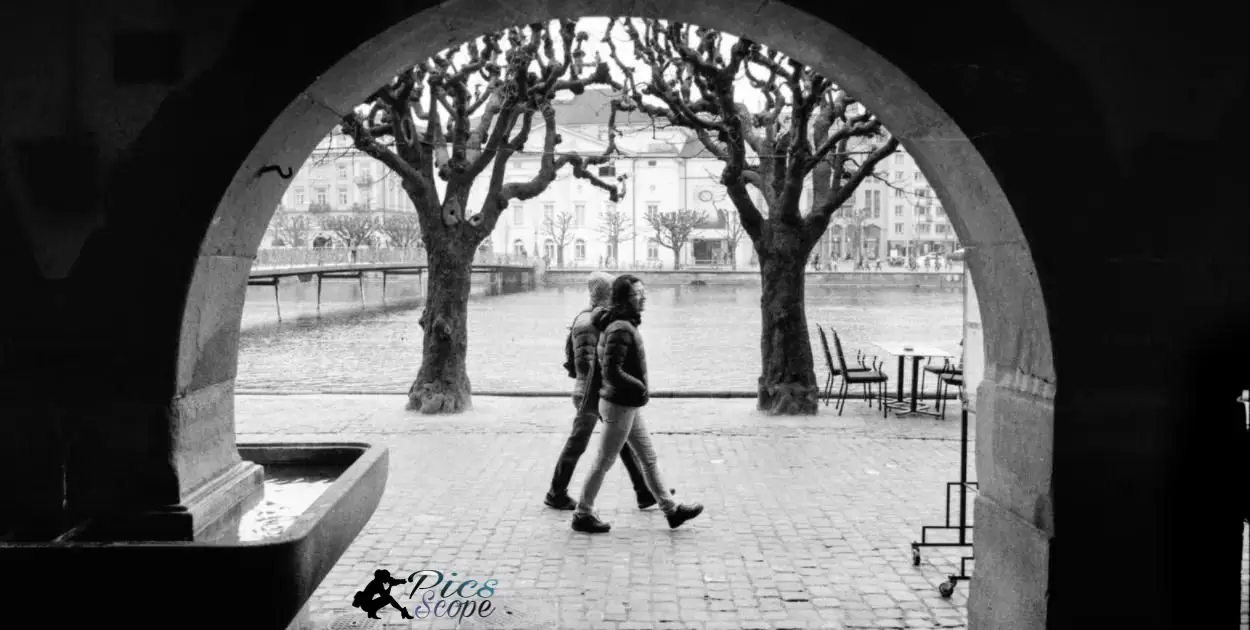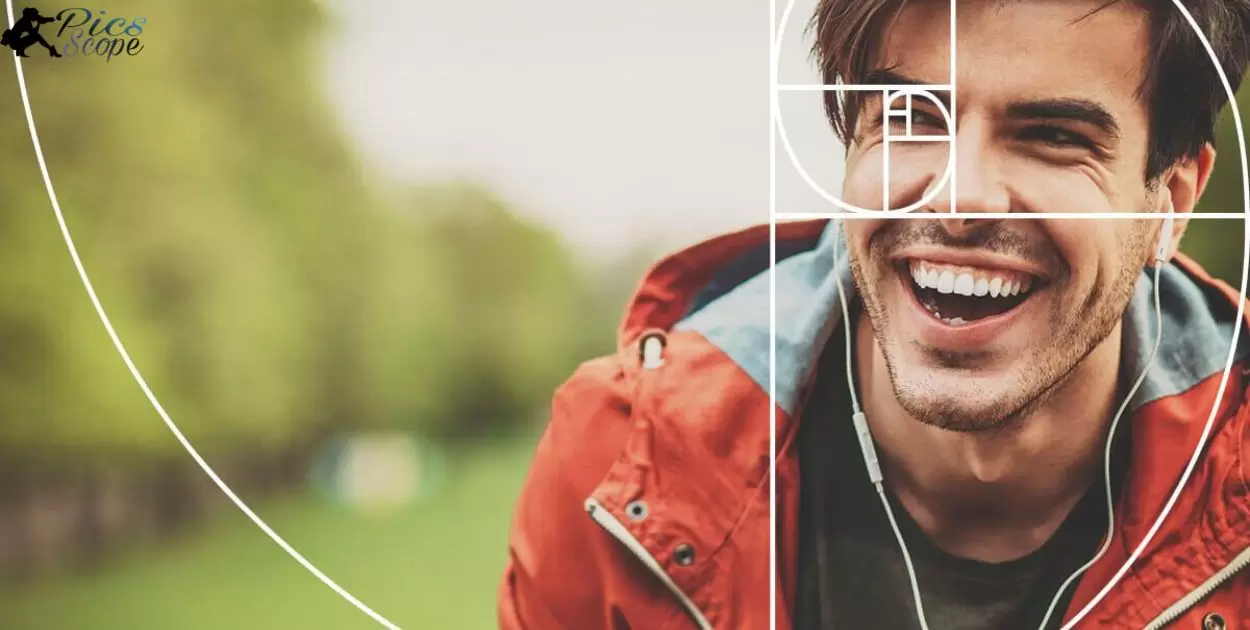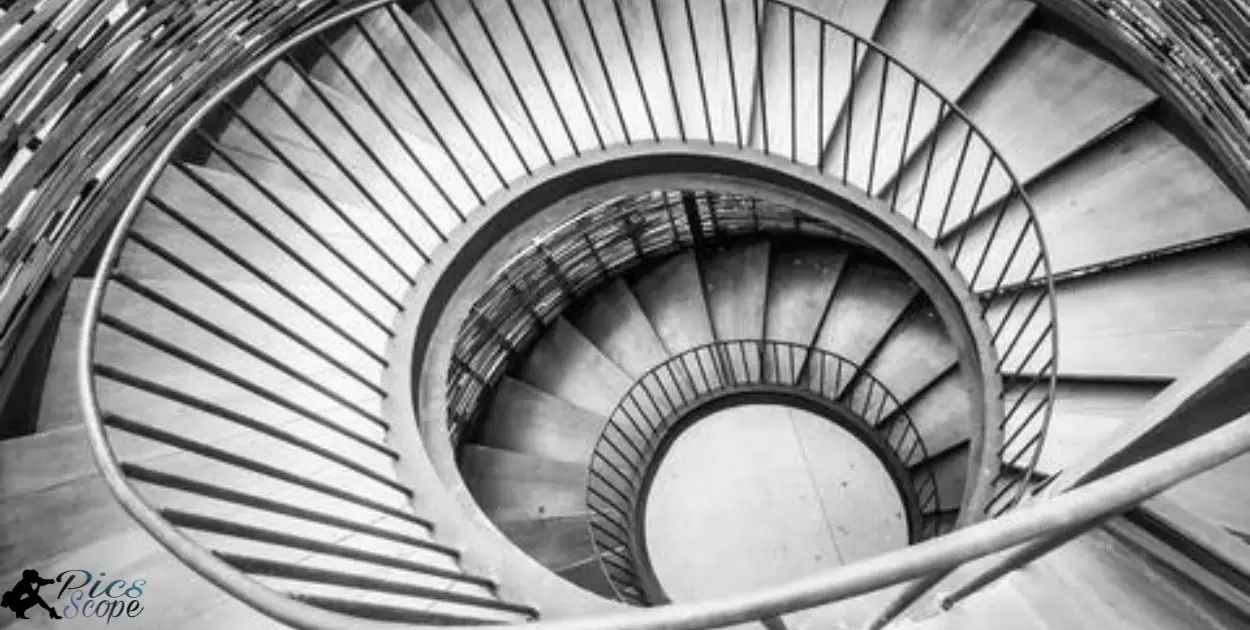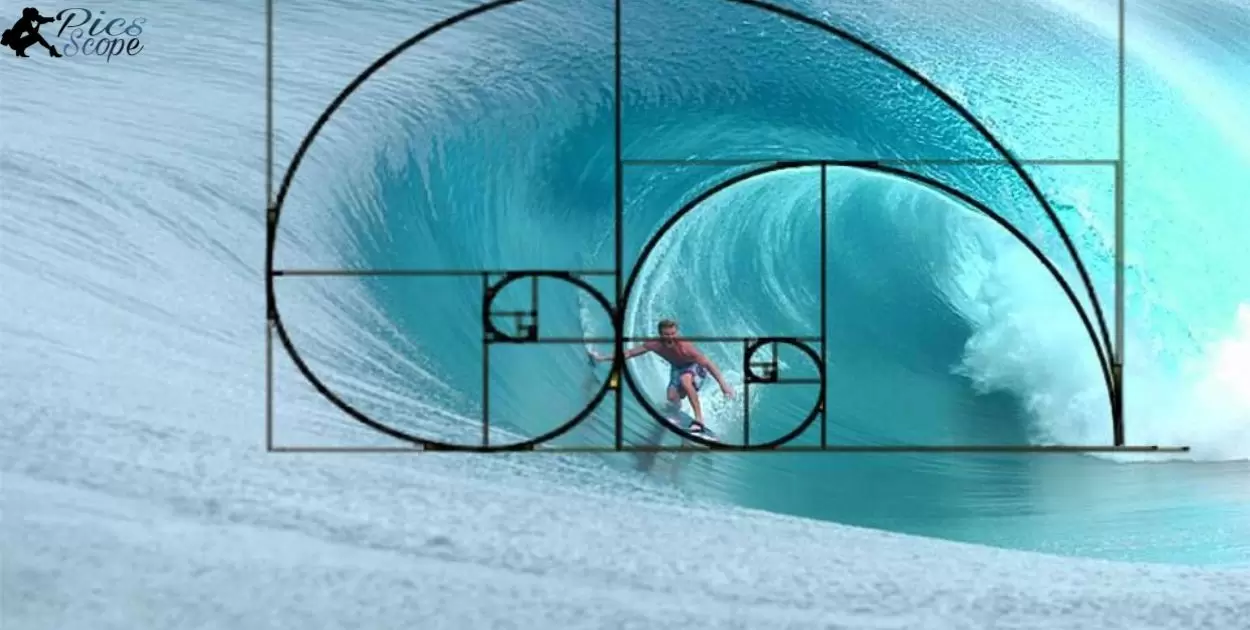Fibonacci Spiral Photography involves using the Fibonacci Spiral, derived from the Fibonacci sequence, for visually appealing image composition. It’s a logarithmic spiral based on the golden ratio found in nature, serving as a guide for creating balanced and aesthetically pleasing photographs.
How To Use The Fibonacci Spiral Photography transforms your photos into captivating visual experiences, bringing natural beauty and balance to your compositions. Whether it’s landscapes, portraits, or abstract scenes, incorporating the Fibonacci Spiral elevates your photographs by enhancing focal points and creating a harmonious visual flow.
To master How To Use The Fibonacci Spiral Photography, consider key tips. Place subjects along the spiral arms, experiment with angles for the most harmonious composition, and maintain a balance between positive and negative space. Use leading lines and curves to guide the viewer’s eye, resulting in dynamic and engaging photography.
Understanding the Basics of Fibonacci Spiral Photography
In photography, the Fibonacci Spiral is like a guide, helping you arrange things in your photo in a way that looks really good. It’s based on the Fibonacci sequence, which is a cool math thing found in nature. This spiral can make your photos more pleasing to the eye by creating a balanced and harmonious composition.
What’s the deal with Fibonacci Spiral photography? It’s about using this spiral to make your photos look better. By understanding the basics, like where to place your main subjects and how to balance the space in your photo, you can bring out the beauty in your images using the Fibonacci Spiral.
What is the Fibonacci Spiral in photography?
The Fibonacci Spiral in photography is a guiding principle derived from the Fibonacci sequence, a mathematical concept. It’s a logarithmic spiral that naturally occurs in various elements of the natural world, such as seashells and flower petals. Photographers use this spiral as a tool to create visually appealing and balanced compositions.
To understand the Fibonacci Spiral in photography, picture it as a series of expanding curves. These curves help determine the placement of key elements within the frame, leading to more harmonious and engaging photographs. Applying this concept can add a dynamic and aesthetically pleasing touch to your images.
Exploring the connection between Fibonacci sequence and visual composition
Composition is crucial for creating captivating images. The Fibonacci sequence, a mathematical concept, gives rise to the Fibonacci Spiral—a guiding principle in photography. This spiral, with its logarithmic curves, helps photographers arrange elements within the frame for balanced and aesthetically pleasing compositions.
| Fibonacci Sequence | Visual Composition |
| Golden Ratio | Harmonious placement |
| Logarithmic Curves | Dynamic compositions |
| Natural Aesthetics | Captivating visuals |
How does the Fibonacci Spiral enhance the aesthetics of your photography?
The Fibonacci Spiral adds a touch of visual magic to your photos. It guides you in placing your subjects in a way that naturally appeals to the eye. By understanding and applying this spiral, your photos gain a balanced and harmonious look, creating a captivating visual experience.
Wondering how to use the Fibonacci Spiral in your photography? It’s simpler than it seems. Identify your main subjects, place them along the spiral, and experiment with different angles. This technique transforms your ordinary photos into visually engaging masterpieces.
The mathematical beauty behind photographic compositions

In photography, the Fibonacci Spiral is like a secret formula for making beautiful pictures. It’s a cool math trick that helps photographers place things in just the right spots to make images look amazing.
Instead of being complicated, it’s like a visual guide that makes your photos naturally pleasing, adding a touch of math magic to your art. Explore this math beauty to create pictures that catch the eye and tell stories effortlessly.
When you use the Fibonacci Spiral in your photography, you’re not just taking pictures; you’re unlocking a creative tool. It’s about putting the subject in the right places and using the golden ratio to make photos visually balanced. No need to be a math expert – it’s a simple way to add a touch of elegance and order to your images, revealing the hidden beauty of math in the art of photography.
How Can Photography Benefit from the Fibonacci Spiral?
Photography gets a boost from the Fibonacci Spiral. This spiral, tied to the Fibonacci sequence, enhances the visual appeal of photos. It’s not just math; it’s a tool that transforms your pictures, adding balance and captivation to different photography styles.
When you integrate the Fibonacci Spiral into photography, you unlock a powerful technique. It brings a dynamic and balanced feel to your shots, working its magic across various genres. From landscapes to portraits, the Fibonacci Spiral proves to be a valuable asset, helping photographers create visually stunning and harmonious compositions effortlessly.
What role does the Fibonacci Spiral play in transforming photography?
- Guides composition: The Fibonacci Spiral serves as a visual roadmap, directing the placement of elements in a photograph.
- Enhances aesthetics: By leveraging the golden ratio, it brings balance and harmony to the composition, creating visually appealing images.
- Captivates viewers: The spiral draws the viewer’s eye, leading them through the image and creating a dynamic and engaging experience.
- Works across genres: Whether capturing landscapes, portraits, or abstract scenes, the Fibonacci Spiral proves versatile in elevating the impact of diverse photography styles.
The impact of Fibonacci Spiral on various photographic genres
Fibonacci Spiral has a big impact on different photography styles. It helps create dynamic and balanced compositions in a simple way. When applied to landscapes, it brings out the beauty of nature with a natural sense of order. In portraiture, it guides the viewer’s eye to the subject, making the photo more visually engaging.
In abstract photography, the Fibonacci Spiral adds a touch of harmony to seemingly chaotic scenes. It’s a versatile tool that adapts to various genres, making it accessible for photographers of all levels. From landscapes to portraits and abstracts, the Fibonacci Spiral enhances the visual appeal of photographs across diverse styles.
Leveraging the golden ratio for captivating and balanced photographic compositions
In photography, using the golden ratio helps create captivating and balanced compositions. It’s a simple yet powerful technique where you divide your frame into sections, following a specific ratio. This method guides you in placing key elements strategically, making your photos visually appealing.
The golden ratio is like a secret formula that many successful photographers use. It ensures a pleasing balance in your images without being complicated. By incorporating this straightforward approach, you’ll find your photographic compositions becoming more engaging and visually harmonious.
How to integrate the Fibonacci Spiral seamlessly into your photography?
Wondering how to make the Fibonacci Spiral work effortlessly in your photos? Start by identifying the main elements in your shot – like subjects or points of interest. Try placing these along the spiral arms for a balanced and visually pleasing composition.
Experiment with different angles, and don’t forget to keep a good balance between the things you want people to notice (positive space) and the background (negative space). With these simple steps, you’ll be seamlessly incorporating the Fibonacci Spiral into your photography in no time.
How is Fibonacci used in photography?
Fibonacci is a math concept, and in photography, it helps create visually pleasing images. Photographers use the Fibonacci sequence to guide their compositions. They position key elements in the frame along the Fibonacci Spiral, which is a logarithmic spiral derived from this sequence.
When you use the Fibonacci Spiral in photography, it adds balance and harmony to your pictures. It’s a practical tool to make your photos more engaging by placing subjects along the spiral arms and maintaining a balance between positive and negative space. By understanding how to use the Fibonacci sequence in photography, you enhance the overall appeal of your images.
What is the golden ratio rule in photography?

The golden ratio rule in photography is a simple guideline that helps photographers compose visually pleasing images. It involves dividing the frame into sections using the golden ratio, creating balance and harmony in the composition.
By placing key elements along these lines or their intersections, photographers can draw attention to focal points, enhancing the overall appeal of their photos. This rule is a practical tool for beginners and professionals alike, providing a straightforward way to improve the visual impact of photographs.
Practical Tips for Incorporating Fibonacci Spiral in Your Photography
To use the Fibonacci Spiral in your photography, start by identifying your main subject and placing it along the spiral arms. Experiment with different angles, finding the one that complements your subject best. Balancing positive and negative space within the frame is crucial for creating visually appealing compositions.
Consider incorporating leading lines and curves to guide the viewer’s eye along the Fibonacci Spiral. This technique adds a dynamic element to your photos, enhancing the overall visual experience. By following these practical tips, you can seamlessly integrate the Fibonacci Spiral into your photography and elevate the impact of your compositions.
Why is it crucial to identify prominent subjects for the Fibonacci Spiral?
In Fibonacci Spiral Photography, finding important subjects is key. Identify what stands out in your scene—whether it’s a stunning landscape or a captivating portrait. By placing these subjects along the spiral arms, you enhance your photo’s appeal and draw attention to the elements that matter most.
Experiment with angles for the best composition. Different viewpoints help integrate the Fibonacci Spiral seamlessly into your photography. Achieve visual harmony by balancing positive and negative space in your frame. These practical tips ensure your photos capture the eye and tell a compelling visual story.
Achieving visual harmony by balancing positive and negative space
In photography, it’s important to create balance between positive and negative space. Positive space is where the main subjects are, while negative space is the background. Achieving visual harmony means finding the right proportion between these spaces.
When composing your shot, consider the placement of your main subject in the frame. Ensure there’s enough empty space around it, avoiding clutter. This simple adjustment can enhance the overall appeal of your photo, making it visually pleasing and well-balanced.
How leading lines and curves guide the viewer’s eye in Fibonacci Spiral photography
In Fibonacci Spiral photography, leading lines and curves are like visual roadmaps, directing the viewer’s gaze through the image. These lines and curves act as visual pathways, subtly guiding the eye along the spiral’s natural flow.
By strategically placing key elements along these lines, photographers create a dynamic and engaging experience. Viewers instinctively follow these guiding lines, exploring the composition effortlessly, making the photograph visually appealing and easy to navigate.
Elevating Different Photography Styles with Fibonacci Spiral
Incorporating the Fibonacci Spiral in photography can enhance various styles. Stop Action Photography gains depth and engagement, creating compelling visual stories with the balanced composition of the Fibonacci Spiral. Landscapes burst with life when you use the spiral to guide the viewer through natural scenes.
Abstract photography takes on a new dimension with this technique. The spiral introduces dynamic energy, adding interest and intrigue to otherwise unconventional subjects. Whether in landscapes, portraits, or abstracts, the Fibonacci Spiral becomes a versatile tool for elevating the impact and visual appeal of diverse photography styles.
What makes landscapes come alive through Fibonacci Spiral photography?
In Fibonacci Spiral photography, landscapes come alive by following a special pattern. The Fibonacci Spiral, based on the golden ratio, guides the placement of elements in a way that feels balanced and natural. By using this technique, photographers can highlight key features in landscapes, creating visually appealing and harmonious compositions that draw viewers into the scene.
When applying the Fibonacci Spiral to landscapes, it’s about finding the right balance. Place significant elements like mountains, trees, or focal points along the spiral’s arms to enhance the overall visual flow. This approach adds a dynamic quality to landscape photography, making it more engaging and captivating for those who view the final images.
Portraiture and Fibonacci Spiral: Creating captivating visual narratives
In portrait photography, using the Fibonacci Spiral adds a dynamic touch to your visual storytelling. Instead of placing the subject in the center, position them along the spiral’s natural flow for a more engaging and balanced composition. This technique creates captivating portraits that draw the viewer’s eye, enhancing the narrative within the frame.
Experiment with angles and framing to incorporate the Fibonacci Spiral seamlessly into your portraits. By doing so, you guide the viewer through the photo, highlighting key elements in a visually appealing way. Mastering this approach elevates your portraiture, resulting in images that tell compelling stories through the captivating use of the Fibonacci Spiral.
Abstract photography techniques using the Fibonacci Spiral
Abstract photography takes on a new dimension when infused with the dynamic structure of the Fibonacci Spiral. This compositional tool adds an intriguing element to abstract images, guiding the viewer through a visually stimulating journey. Explore the table below for practical techniques to elevate your abstract photography with the Fibonacci Spiral.
| Techniques | Description |
| Spiral Center of Interest | Position the main abstract element at the center of the Fibonacci Spiral for a visually striking focus. |
| Expanding Curves | Create abstract patterns by letting curves expand along the Fibonacci Spiral, adding a sense of motion. |
| Overlapping Elements | Experiment with overlapping abstract elements along the spiral arms to achieve a sense of depth. |
| Negative Space Composition | Use the Fibonacci Spiral to distribute negative space, enhancing the overall balance of abstract scenes. |
How to apply Fibonacci Spiral for dynamic and engaging photographic storytelling?
In photography, adhering to the golden rule in photography, using the Fibonacci Spiral can make your stories more dynamic and engaging. Try placing key elements along the spiral’s arms for a visually appealing effect. Experiment with different angles and perspectives to create a sense of flow and captivate your audience.
Make sure to balance positive and negative space in your frame, guiding the viewer’s eye smoothly through your narrative. By incorporating the Fibonacci Spiral, you’re not just taking pictures; you’re crafting visual stories that resonate with harmony and draw people into your unique photographic world.
What is the spiral theory in photography?

In photography, the spiral theory involves using a specific spiral pattern called the Fibonacci Spiral to compose images. This spiral is based on a mathematical sequence found in nature, like in seashells and flowers. Photographers apply this spiral to guide the placement of elements in their pictures, creating visually pleasing and balanced compositions.
To understand the spiral theory in photography, think of it as a natural way to arrange your subjects in a captivating manner. Instead of placing objects randomly, the spiral theory helps you organize them using a pattern that naturally appeals to the eye, adding a dynamic and harmonious touch to your photos.
How do you use Fibonacci spirals?
In photography, using the Fibonacci spiral, also known as “the golden rule in photography,” is a simple yet powerful technique. First, understand the spiral’s structure, derived from the Fibonacci sequence, and apply it to guide your composition. Place key elements, like focal points or subjects, along the spiral arms for a balanced and visually appealing photo.
Experiment with angles and perspectives to find the most harmonious composition. The Fibonacci spiral, the golden rule in photography, adds a dynamic touch to your photos, creating a natural flow that captivates the viewer’s attention. By incorporating this method, you elevate your photography with a straightforward yet effective approach..
Advanced Strategies for Fibonacci Spiral Photography
Unlock advanced skills in Fibonacci Spiral Photography with these straightforward strategies. First, refine your composition by placing subjects precisely along the spiral arms. Experiment with different angles to discover the most harmonious perspectives for your photos.
Next, enhance your visual storytelling by analyzing real-world examples of successful Fibonacci Spiral photography. Dive into the details of each image to understand how leading lines and curves guide the viewer’s eye. Push your creative boundaries with experimental and abstract approaches, mastering the art of Fibonacci Spiral Photography effortlessly.
Exploring advanced techniques for using Fibonacci Spiral in photography
Discovering advanced techniques in Fibonacci Spiral photography opens new creative horizons. Experiment with different angles, ensuring subjects align with the spiral arms for captivating compositions.
Refining your skills involves a hands-on approach, trying various perspectives to find the most visually engaging results. Analyze successful examples and push your boundaries, exploring experimental and abstract applications of the Fibonacci Spiral in your photography.
USE THE RULE OF THIRDS TO HELP YOU
The rule of thirds is a simple but powerful technique in photography. It involves dividing your photo into a grid with nine equal parts by drawing two horizontal and two vertical lines. By placing key elements, such as the Fibonacci sequence in nature, along these lines or at their intersections, you create visually balanced and appealing compositions.
To use the rule of thirds effectively with the Fibonacci sequence in nature, position your main subject at one of the intersection points rather than placing it in the center of the frame. This off-center placement adds interest and guides the viewer’s eye through the photo. Experiment with this technique to enhance your photography and achieve more dynamic and engaging compositions.
How to refine your composition skills with Fibonacci Spiral?
Enhancing your composition skills with the Fibonacci Spiral is simple and effective. Start by identifying key elements in your scene, like focal points or interesting subjects. Then, place them strategically along the spiral arms, creating a visually engaging and balanced composition. This method guides the viewer’s eye naturally, making your photos more dynamic and captivating.
Experiment with different angles to find the most harmonious arrangement, and don’t be afraid to play with perspectives. The Fibonacci Spiral offers a straightforward yet powerful approach to refining your composition skills, allowing you to create visually compelling photographs with ease.
Analyzing real-world examples of successful Fibonacci Spiral photography
Explore actual photos that showcase the success of Fibonacci Spiral photography, incorporating the Fibonacci sequence in nature. In these images, notice how the spiral guides your eyes through the composition, creating a sense of harmony. Learn from practical examples, identifying how photographers effectively apply the Fibonacci Spiral, including “fibonacci sequence in nature,” for compelling visual storytelling.
In successful Fibonacci Spiral photography, subjects are strategically placed along the spiral arms, drawing attention and adding a dynamic feel. These real-world examples, featuring the “fibonacci sequence in nature,” demonstrate the versatility of the spiral across various genres, offering valuable insights for enhancing your own photographic compositions.
Pushing creative boundaries: Fibonacci Spiral in experimental and abstract photography
Experimenting with Fibonacci Spiral in photography opens new doors to creativity. In abstract photography, the spiral guides composition, adding dynamic energy inspired by the Fibonacci sequence in nature. Artists push their boundaries, using the Fibonacci Spiral to create visually striking and innovative images.
In the realm of experimental photography, embracing the spiral unleashes endless possibilities. Photographers actively engage with the spiral’s mathematical beauty, incorporating it to break conventional norms. The result is a collection of images that captivate viewers with their unique perspectives and unconventional visual narratives, echoing the patterns found in the Fibonacci sequence in nature.
FAQ’s
How does the Fibonacci Spiral enhance photographic composition?
The Fibonacci Spiral guides the placement of elements, adding visual appeal and balance to your photographs.
Can the Fibonacci Spiral be applied to different photography genres?
Yes, the spiral is versatile and can elevate compositions in various genres, from landscapes to portraits.
Why is balancing positive and negative space important in Fibonacci Spiral photography?
Balancing space ensures a harmonious visual flow, guiding the viewer through your narrative seamlessly.
What role do angles and perspectives play in Fibonacci Spiral photography?
Experimenting with angles enhances the sense of flow and captivates the audience in your visual storytelling.
Is the Fibonacci Spiral suitable for experimental and abstract photography?
Absolutely, embracing the spiral’s mathematical beauty opens creative possibilities for experimental and abstract photographic expressions.
Conclusion
Mastering How To Use The Fibonacci Spiral Photography unlocks a world of visual storytelling. The simplicity of this mathematical concept adds depth to your compositions, guiding the viewer’s eye with a natural flow. Whether you’re capturing landscapes, portraits, or experimenting with abstract forms, incorporating the Fibonacci Spiral enhances the overall appeal of your photographs.
So, as you embark on your photographic journey, remember the power of the Fibonacci Spiral. It’s not just a technique; it’s a tool that transforms your images into captivating narratives. By understanding and applying this golden rule in photography, you’re not only improving your composition skills but also inviting your audience into a visually harmonious and engaging photographic experience







